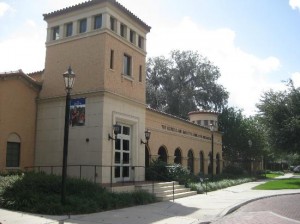 Finding Amy Galpin’s office is quite the journey. Tucked away in a corner of the Cornell Fine Arts Museum’s gift shop is a discreet doorway leading to a narrow spiral staircase. The stairs open up to a small office full of character: a space that one would expect of an art museum curator.
Finding Amy Galpin’s office is quite the journey. Tucked away in a corner of the Cornell Fine Arts Museum’s gift shop is a discreet doorway leading to a narrow spiral staircase. The stairs open up to a small office full of character: a space that one would expect of an art museum curator.
Galpin is an extremely eloquent, put-together lady. Her red hair falls slightly below her shoulders, and she is dressed in a purple and black patterned dress, black cardigan, and silver necklace adorned with rhinestones and pearls. Given her professional appearance, the sight of her office may surprise many. She apologizes for the disorganization of her small office, with books upon books about art from any given time period and artistic movement filling shelves. Whatever does not fit is strewn across her desk. “Organized chaos,” she declared.
Galpin has been the curator of the Cornell Fine Arts Museum since October 2013. Her interest in art stems from her childhood, when the New-Jersey-born curator dreamed of venturing to New York City to see a Georgia O’Keefe retrospective at the Metropolitan Museum of Art. With a BA in Film, an MA in Latin American Studies, and a PhD in Art History, it was somewhat of a process before she realized that art could become a central part of her career.
“When I was getting my Master’s in Latin American Studies, my first class was a course on Mexican modernism, and I just found myself completely enthralled in the art and the history and the political situations of the time in Mexico City,” she said. “I would stay up all night reading the books for this class, and I realized that I was really interested in art, and I wanted to pursue a career in the arts.” After interning at a museum near where she was studying in San Diego, the experience forever changed her path.
A typical day for Galpin involves lots of emails, voicemails, and meetings, but she always tries to walk through the galleries at some point everyday, sometimes even multiple times a day.
“I find that engaging with a work of art, whether it’s for five minutes or ten seconds, is always inspiring,” she said. “We’re here as caregivers of these works, and the works of this collection and outside in the world always give me great inspiration.”
Lots of commotion can be heard below in the lobby of the museum when a crash rings out, the source of the noise unknown. Galpin is not at all fazed. Apparently this is a regular occurrence.
“You can hear lots of noise right now,” she said. “It’s an environment most conducive to that type of work, but also one of the reasons why I chose museum work, because I really love the interaction with people. I love the interaction with colleagues both within the museum and on campus, and coming together to work on different programs.”
Cornell Fine Arts Museum Member and Guest Relations Coordinator Dina Mack is just one of many colleagues with whom Galpin works regularly to keep the museum a consistently positive experience for all who visit. She and Galpin have been working together for the past two years, and both started at the museum around the same time.
“She is a joy to work with,” said Mack. “She’s very smart, approachable, and a thoughtful collaborator. One CFAM member, who also attended Amy’s lecture to UCF’s Lifelong Learning Group, shared that ‘Amy was spectacular as usual.’ She has cultivated more than a few fans in her short time at Rollins, myself included.”
Visitor Services and Education Coordinator Louise Buyo shares the same sentiments when it comes to Galpin’s work at the museum.
“The depth of her knowledge of contemporary art is inspiring. Wonderful things are happening in Central Florida’s local arts scene, and awareness of CFAM is growing in the community. Amy’s work is a big part of that,” said Buyo. She shares that Galpin is not only a force to be reckoned with in the workplace, but also a superior that can connect with coworkers on a personal level.
“Amy has a great sense of humor. We have a small staff and a big vision, so laughter is important. It’s in the air we breathe around here, and it’s one of the reasons I love coming to work. Professionally, Amy has been a role model for me. She works very hard, but she makes sure to have a balanced personal life too.” In her free time, Galpin enjoys going for long walks, watching movies, and spending time with her husband Russell and their dog Xabi Alonso.
Galpin’s passion for her work at the museum shows when she imagines the potential of what could happen in the future if given the opportunity to work with an infinite amount of funds.
“We can all dream, right? I think if I had unlimited resources I would love to expand the walls of this museum and really have some major contemporary art commissioned for our space both inside and outside,” she said.
“Having artists responding to the land, to this topography, not just modernist sculptures that we plunk into the ground, but really having artists like Robert Irwin who has often responded to specific environments in the creation of large-scale sculpture. Something like that would be really amazing, and something who anyone could appreciate, engage with, and interact with.”
Another idea she has stems from her roots as an art historian studying various aspects of the colonial period of Mexico.
“I’ve often thought that a dream show would be to do some 17th and 18th century paintings created in Mexico from the colonial period when you have some of those luxurious fabrics and jewelry worn by the subjects, and to actually have the jewelry in cases and then have the paintings behind. I think that would just be super, super fabulous,” she exclaimed.
Although museum attendance has been up 47 percent since last year with 15,000 people visiting and an additional 30 percent this fall, she still feels that there are lots of misconceptions when it comes to museum-going, and that students should make the effort to take advantage of everything the museum has to offer.
“Sometimes I think we have this idea with a museum that we can only go if we’re going to spend like two hours, or we can only go if we’re going to have deep thoughts. If you have 20 minutes in between a class, come in and just walk by a painting or a sculpture. The museum doesn’t have to be this church-like experience, and it can be a lively space with noise, and you can come in and go out as you please.”
As if on queue, another loud noise followed by commotion rings out from below.

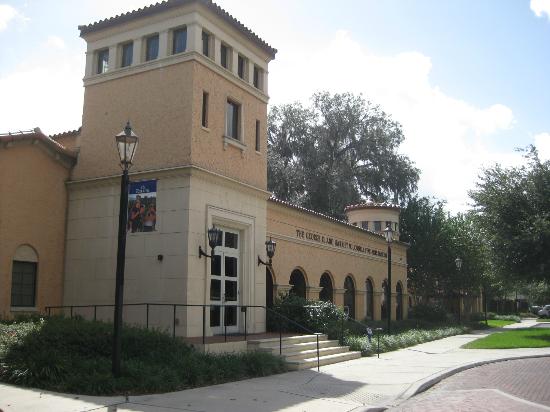
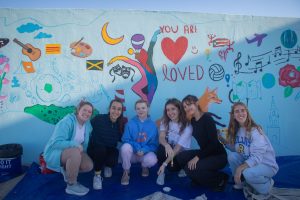

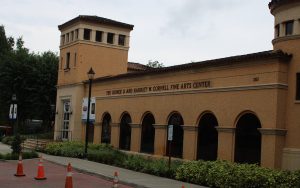
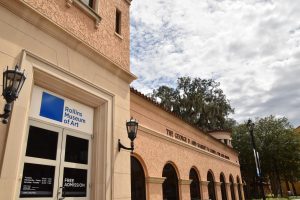
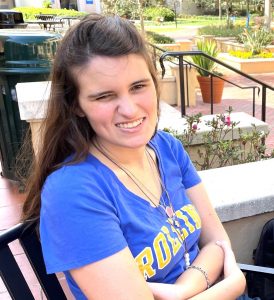
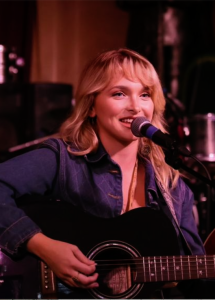

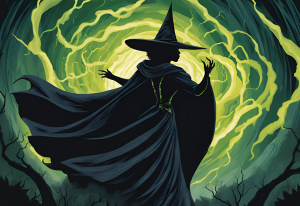


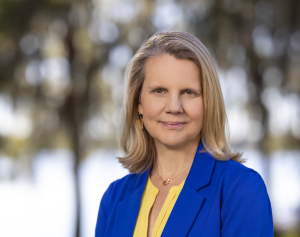
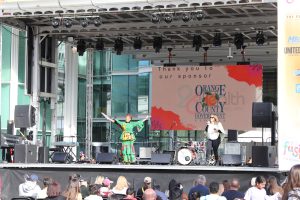


Be First to Comment